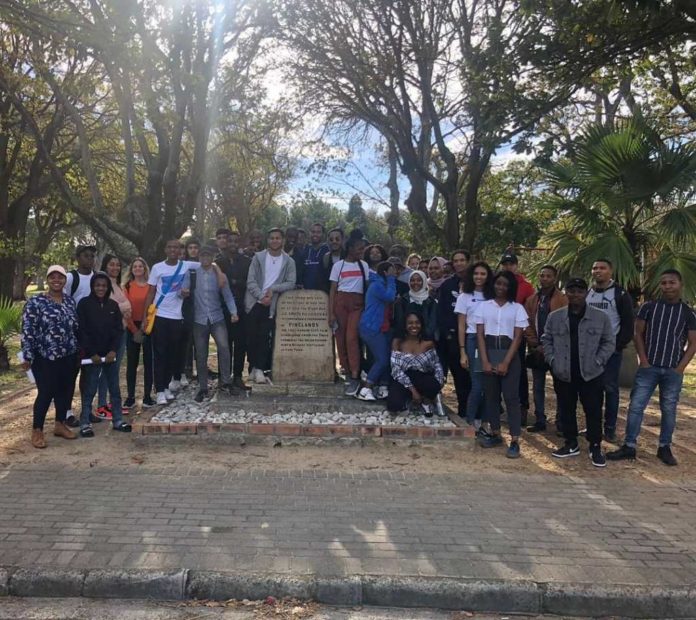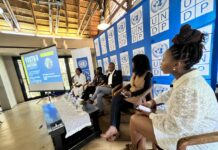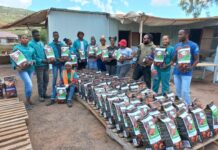During her time lecturing journalism at Wits University and Cape Peninsula University of Technology (CPUT) Asanda Ngoasheng became interested in developing a social justice curriculum. She was teaching at the height of the Fees Must Fall movement and the conversations around decolonising the curriculum. Ngoasheng said she believed in these movements and took a decision to participate in decolonising the curriculum.
Along with a colleague, she started a movement around decolonising the curriculum at CPUT. They gathered other lecturers and had discussions about what it meant to decolonise the curriculum and what it meant to grow a localised student-centered curriculum. “There was very little local content. It wasn’t always interesting for the students,” said Ngoasheng. Although she was a journalism Ngoasheng got called by other departments to help them with developing their curriculum for social justice.
Ngoasheng said she started out developing the curriculum for her own journalism class and then started out helping out lecturers in other departments. She worked on an apartheid spatial planning curriculum for the architecture department. During this curriculum, the students visited various places across Cape Town so that they could understand apartheid spatial planning and the impact of the structure built and the environment it’s built in. Ngoasheng said this was all to show the students how politics operates even in fields like architecture. This was done for one year but had to be suspended once the coronavirus pandemic hit.
Ngoasheng’s work shows that the idea of decolonising and transforming the curriculum doesn’t only belong in one field. It is not only for the humanities or the fields which are thought of as highly political. She has discussed decolonising curriculums with the marketing department and horticultural department amongst others.
“I have been involved in many efforts and engagements with different people from different industries about changing and transforming their curriculum approaches. I have also written a number of academic articles that talk about curriculum transformation,” she said.
Ngoasheng’s work can be found here.
“Racism is taught. Nobody sits and tells a child you are going to be racist. Children learn from being in society and from seeing how black people are treated. From seeing their parents interact with people who are poor, black, Muslim and all the various different groups,” said Ngoasheng. She said that if children can learn these behaviours, they can also unlearn and be taught the correct way.
The latest work that Ngoasheng was involved in was designing a diversity and social justice curriculum for students from grade 3-7 at a private school in Johannesburg. The curriculum was custom-made for the students to suit their environment and their particularities. The curriculum is built for the private school but it is ready to be rolled out in other schools (private and public as well). She said it’s important to note that when developing a curriculum for much younger students the emotional aspect needs to be considered.
“When I run my workshops, some of the things that young people tell me is that they really feel guilty – especially the white ones. They feel guilty and some are angry that the school has never had these conversations with them. Others feel helpless and others feel frustrated that they didn’t know their POC colleagues were going through all this pain,” said Ngoasheng.
Through the workshops, the students become a lot more self-aware and conscious. The workshops are built to show how young people negotiate and understand race/gender/sexuality and use that information to help them understand better ways to navigate these issues.
“When we say there is no peace without justice, what do we mean. What is conflict resolution versus conflict management versus conflict transformation. We work to create a new environment that seeks to transform the conflict so that there is no conflict anymore,” she said.
She says there is a difference between designing a curriculum for university students and school-going students. One of the major factors is that at schools she needs to consider the parents and how they will react to the curriculum. Most university students are independant adults and the parental factor doesn’t need to be considered.
“When you love yourself and you are more connected to yourself, you become more empathetic towards others and a better human being,” Ngoasheng said. This is something that is a common theme in the curriculums for schools and universities. Ngoasheng aims to help the students understand themselves and then understand others.
For the future, Ngoasheng hopes to work with the department of basic education to develop a comprehensive life orientation curriculum that includes diversity and social justice.









